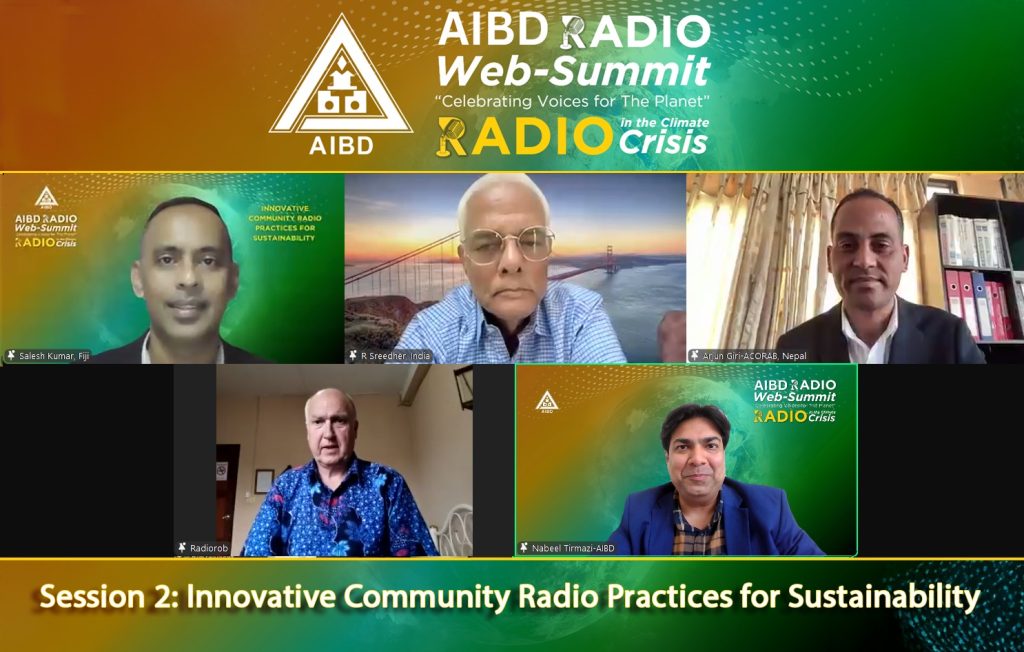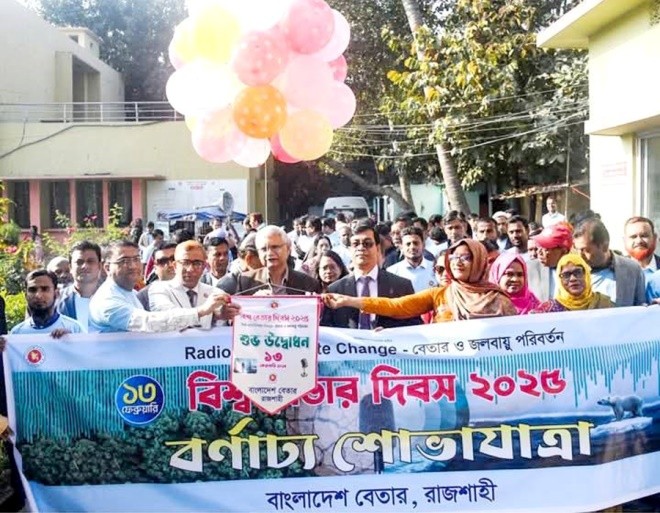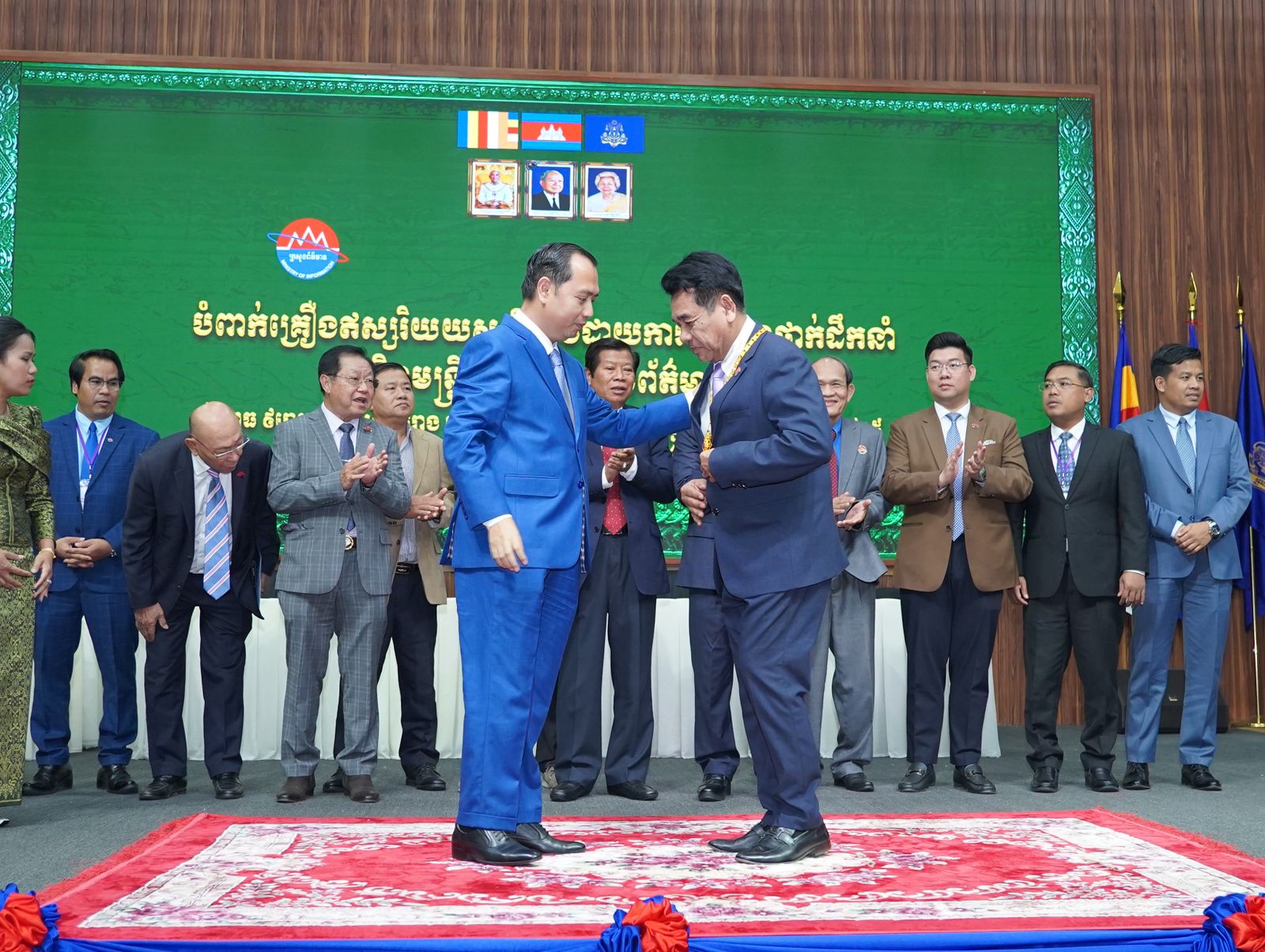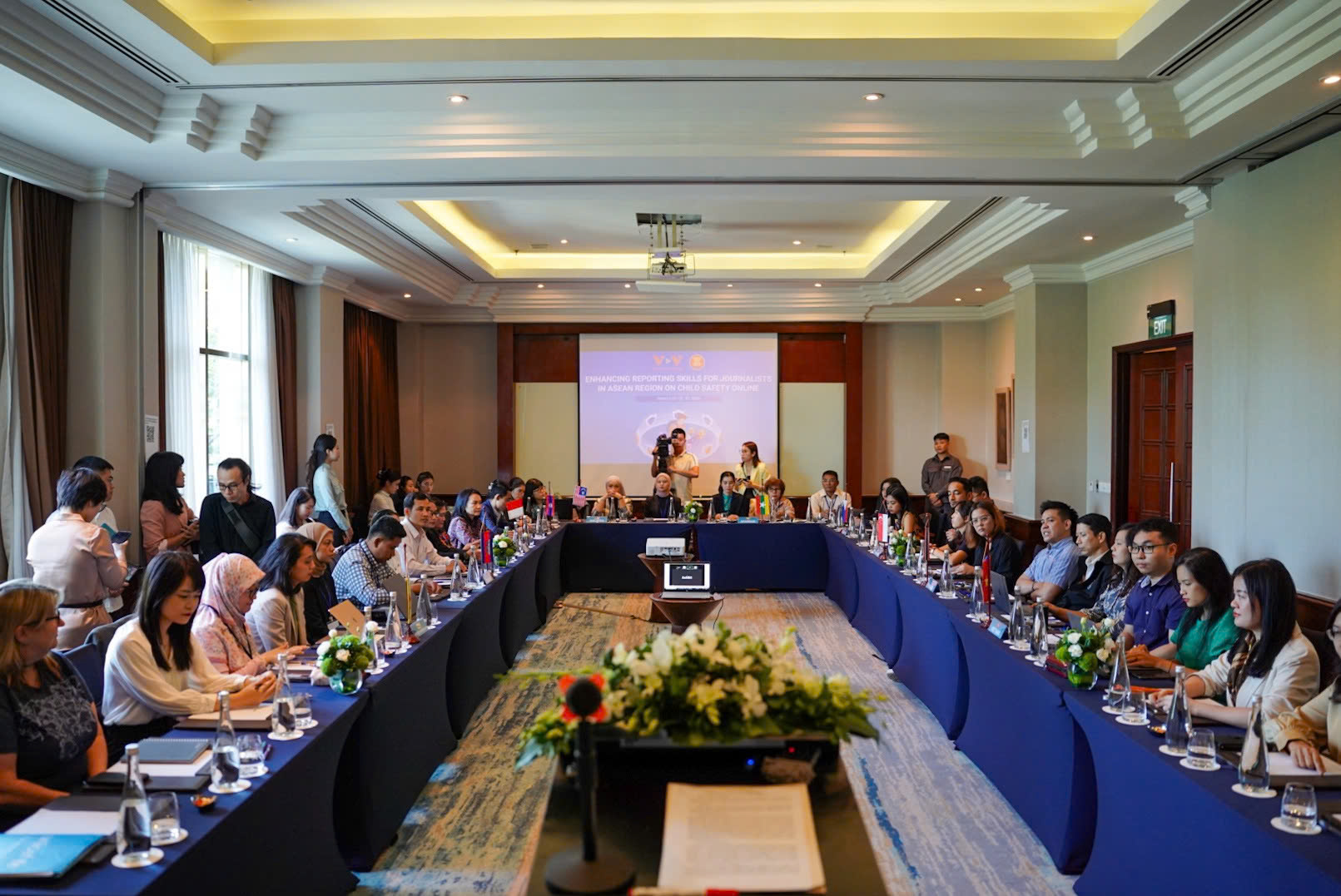By Nabeel Tirmazi
As climate disasters escalate, radio continues to be a lifeline for vulnerable communities. The AIBD Annual Radio Web-Summit, “Voices for the Planet: The Role of Radio in the Climate Crisis,” brought together global media professionals to discuss how radio can enhance climate communication, disaster preparedness, and public awareness.
The February 20, 2025, summit featured experts from over 40 countries, emphasizing radio’s reach and reliability during emergencies. Bangladesh Betar’s Md. Anwar Hossain Mridha shared how radio broadcasts provided life-saving cyclone warnings, while Nigeria’s Ugonma Cokey highlighted the power of local storytelling in promoting climate action. Pakistani journalist Ali Akbar addressed the challenge of misinformation, stressing the need for fact-based reporting in multiple languages.

Technological advancements were another key topic. Rob Hopkins (Canada) introduced open-source radio solutions for remote areas, while Dr. Sreedhar Ramamurthy (India) called for integrating radio into national disaster response plans. Nepal’s Arjun Giri showcased community radio’s role in post-earthquake recovery efforts.

The final session focused on collaboration and policy recommendations. Australia’s Fred Hooper discussed ABC’s Pacific Prepared initiative, which trains local journalists for disaster coverage. Italian expert Giacomo Mazzone urged stronger regulatory support for public service broadcasting, and Dr. Amal Punchihewa (New Zealand) emphasized AI-driven early warning systems.

The annual online event concluded with the slogan that “Radio is not just a medium; it is a movement. Through collaboration and innovation, we can drive climate action and safeguard communities worldwide.”
The livestream of this event can be watched at: https://www.youtube.com/watch?v=gO8tdiX3mX8
Radio’s Critical Role in Climate Crisis Highlighted at AIBD Summit
By Nabeel Tirmazi As climate disasters escalate, radio continues to be
World Radio Day 2025 Celebrated by Bangladesh Betar
By Bangladesh Betar The 14th World Radio Day has been celebrated
Tuning into Change : Green Broadcasting
Dr. Dipendra Kumar Mazumder, Faculty , National Academy Broadcasting &
AIBD Strengthens Collaboration with SLRC
AIBD Programme Manager, Mr. Don Dhammika, recently met with the
AIBD Vice President Honored with Prestigious Award in Cambodia
H.E. Has Sam Ath, Vice President of the Asia-Pacific Institute
AIBD-VOV In-Country Workshop on News Reporting Begins in Buon Ma Thuot, Vietnam
The Asia-Pacific Institute for Broadcasting Development
AIBD Champions Sustainability at UNESCAP’s Engagement and Policy Dialogue in Jakarta
AIBD is proud to have participated
Enhancing Journalistic Competence in Child Online Protection Across ASEAN
Hanoi, 3 October 2023 – To improve journalistic reporting on
Embracing Emerging Technologies: Shaping the Future of Broadcasting
The session at the Asia Media Summit on "Capitalizing on
ASEAN Journalists Unite to Safeguard Children in the Digital World
A three-day hybrid training program brought together 30 journalists from











